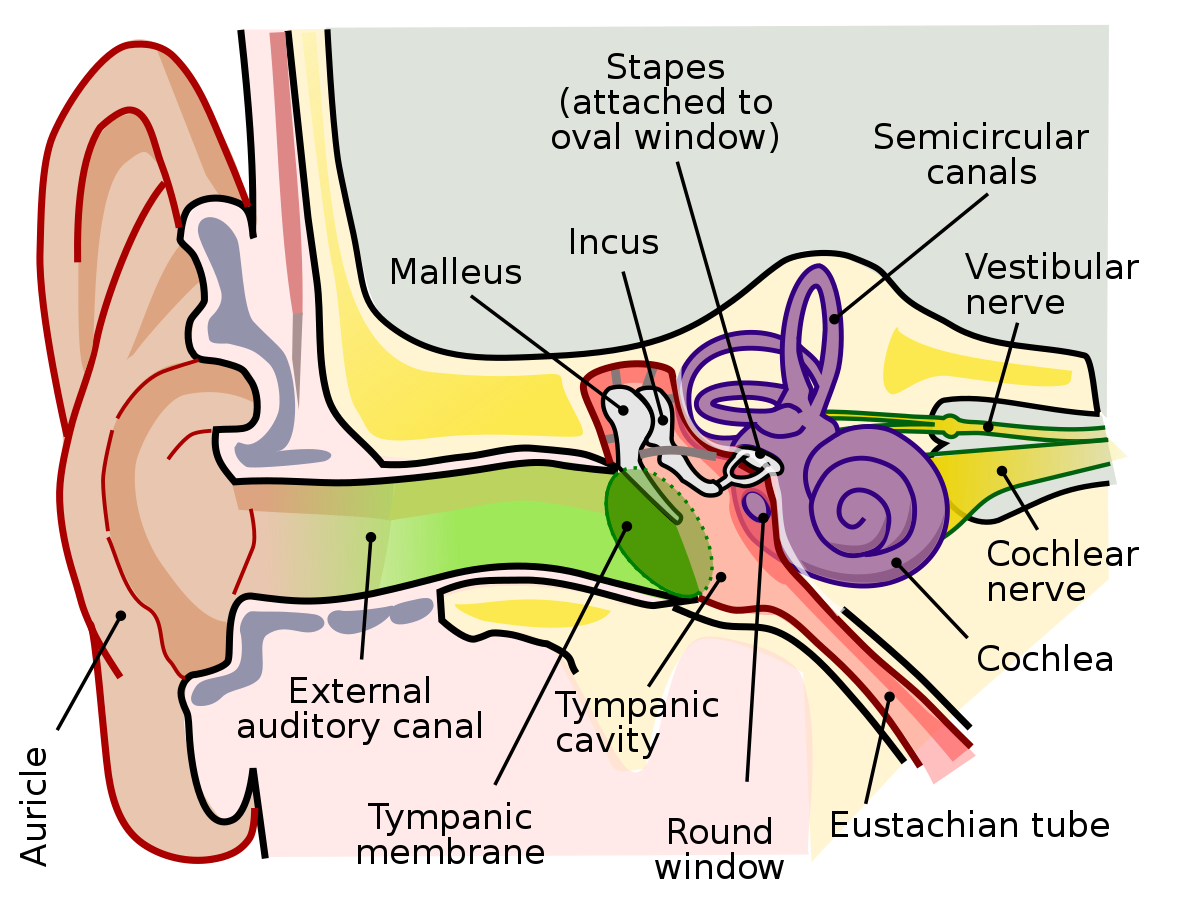

The middle ear cleft is a space which consists of the middle ear cavity or tympanic cavity, the Eustachian tube, the mastoid air cell system and the mucosal lining the system

Epitympanum / Attic- It is a space in middle ear cavity above the level of anterior and posterior malleolar folds (above the upper margin of tympanic annulus). It contains head of malleus, body of incus, ossicular ligaments and mucosal folds. Prussack Space is a space between Pars flaccida laterally, neck of malleus medially, lateral malleal fold superiorly and lateral process of malleus inferiorly. It is the primary site of Acquired Cholesteatoma.
Mesotympanum- It is a part lying medial to Pars Tensa, between epitympanum superiorly and hypotympanum inferiorly. It is an air-filled space, contains handle of malleus, long process of Incus and stapes.
Hypotympanum– It is a part lying below the lower margin of tympanic annulus. It contains a bulge produced by the jugular bulb. If the floor of hypotympanum is deficient thus jugular bulb may project into tympanic cavity.
The tympanic cavity is irregular, air-filled space within the temporal bone, between the tympanic membrane laterally and the osseous labyrinth of inner ear medially. It is six-sided cavity having:
10. The upper-third is usually pneumatized and may house the anterior epitympanic sinus, a small niche anterior to the ossicular heads, which can hide residual cholesteatoma in canal wall up surgery.
Anterior Wall